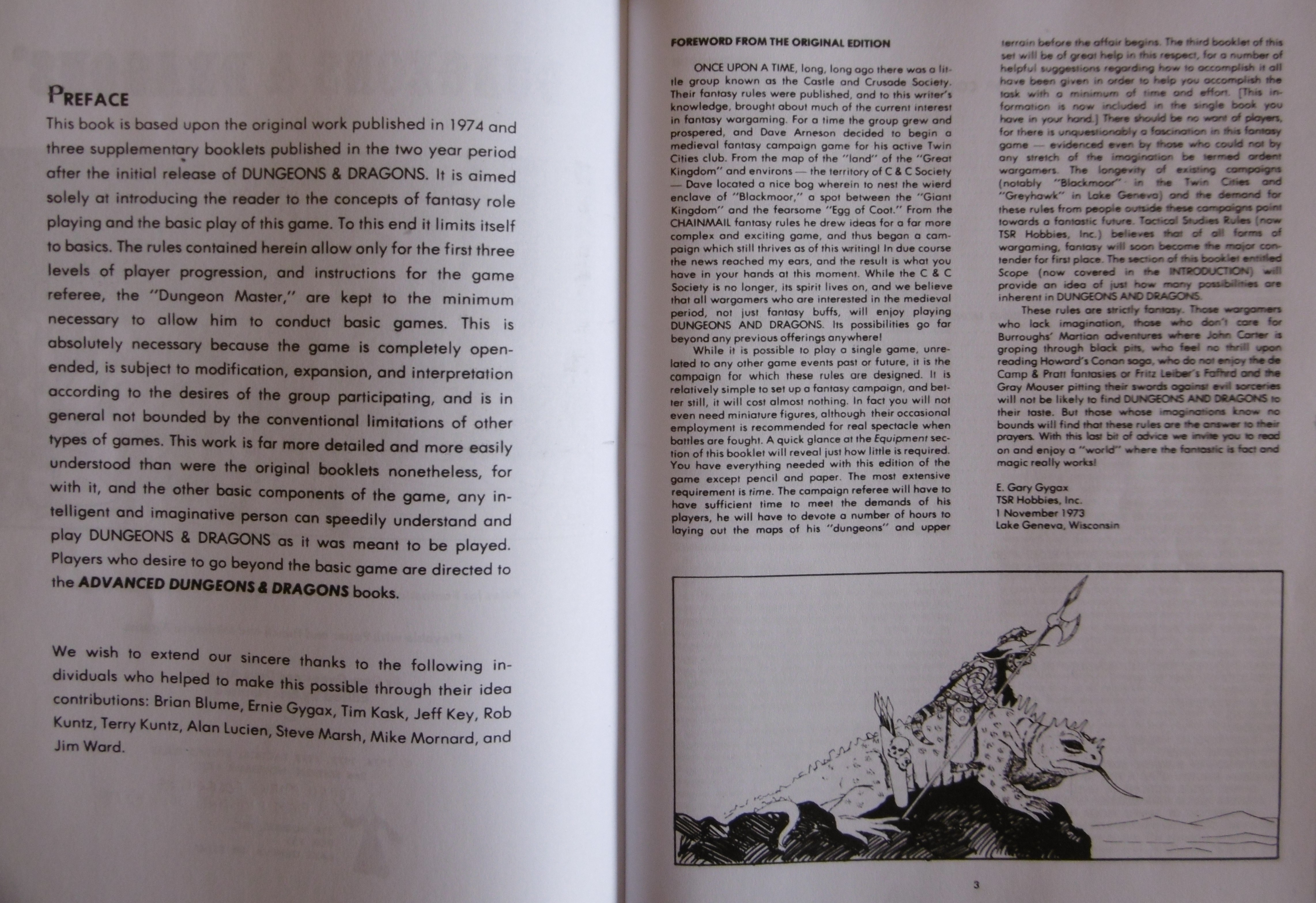“These are the rules,” said Garth. “You don’t have to know them, but this’ll give you an idea about the game.”
I had to study the monochrome cover to make out the image. A dragon—fangs bared, wings spread—narrowed its serpentine eyes at an armored bowman and a bearded man in a pointy hat. The man wore a robe with stars, comets, and crescent moons all over it, like the hat. He pointed a magic wand at the dragon. I could tell it was a magic wand, because magic—in the form of glowing blue flame and tiny stars—was shooting out of it. The bowman, who wore a shield slung over a shoulder, aimed an arrow at the dragon. The dragon sat on a mound of coins and jewelry, chests and vases, and swords that stuck out at angles.
Inside the book, the text was small, the pages eggshell colored, edges tinged yellow, which gave the impression of age. Black and white drawings depicted medieval characters, who were armed and fighting mythic creatures or hordes of grotesque humanoid monsters.
Thumbing through its leaves, I read long headings in block capitals: TIME AND MOVEMENT IN THE DUNGEONS and TRAPS, SECRET DOORS, SURPRISES, WANDERING MONSTERS and EXPERIENCE POINTS AND EXPERIENCE LEVELS. There were rules for COMBAT MELEE, MISSILE FIRE, and MAGIC WEAPONS, plus page after page of descriptions of MAGIC SPELLS and MONSTERS.
My thumb stopped. One whole page was delineated in rows and columns—the heading: TREASURE TABLE. Percentages showed the chances for coins of precious metals, including platinum, which I’d heard of, and electrum, which I hadn’t. The coins came by the thousands and were accompanied by gems, jewelry, maps, and magic.
I flipped back to the front to have a closer look. In the FOREWORD FROM THE ORIGINAL EDITION, I read a mysterious fairy tale. It began with “ONCE UPON A TIME, long, long ago…” and turned quickly esoteric. There were castles, crusades, and societies. There was a character named Dave Arneson and a map of a “Great Kingdom” and its “environs.” There was a bog and, in it, a “weird enclave” called “Blackmoor” in “a spot between the ‘Giant Kingdom’ and the fearsome ‘Egg of Coot.’” There were medieval fantasy “campaigns,” which were more than just a game. “Blackmoor” was one, another was “Greyhawk.”
The place names were unfamiliar, as were many of the words. They all came together in my mind like pieces of an insolvable jigsaw puzzle. But each piece glowed in blue flame and tiny stars.
I closed the book and looked again at the cover. “When do we play?”

Gary Gygax and Dave Arneson, DUNGEONS & DRAGONS: Rules for Fantastic Medieval Role Playing Adventure Game Campaigns Playable with Paper and Pencil and Miniature Figures, edited by Eric J. Holmes, Lake Geneva, WI: TSR Hobbies, 1977.
In the years since, I learned all the place names from the mysterious fairy tale and all the words too. I learned about the Castle & Crusade Society and their CHAINMAIL fantasy rules. I learned that Dave Arneson and the FOREWORD’s author Gary Gygax invented the game, of which the “original edition” was published in the previous decade—not so long, long ago. I have adventured in Greyhawk and Blackmoor and set scenarios for my own medieval fantasy campaigns in those worlds. And although now I know its origin and character, in my mind, the “Egg of Coot” remains fearsome.